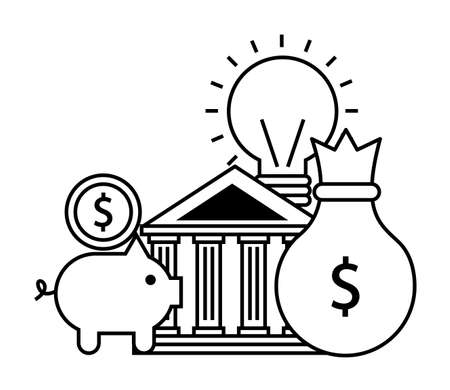1. Introduction: The Allure of High-Priced Art
Art has long been a symbol of culture, wealth, and personal expression. But why do some artworks sell for millions while others remain relatively affordable? The answer lies in a complex mix of historical significance, rarity, and market perception.
Historical Significance
Many high-priced artworks carry immense historical value. They may be linked to pivotal artistic movements, groundbreaking techniques, or renowned artists whose contributions shaped the art world.
(1) Influence on Art Movements
Artworks that pioneered or defined major movements—such as Impressionism, Cubism, or Abstract Expressionism—are often considered priceless due to their impact on future generations.
(2) Connection to Famous Artists
Pieces created by legendary artists like Leonardo da Vinci, Pablo Picasso, or Vincent van Gogh naturally command higher prices because of their creators’ lasting influence on art history.
Rarity and Exclusivity
The scarcity of an artwork significantly affects its valuation. Limited supply increases demand, making rare pieces more desirable to collectors and investors.
| Factor | Impact on Value |
|---|---|
| One-of-a-Kind Originals | Unique works by famous artists fetch higher prices due to their exclusivity. |
| Limited Edition Prints | Prints with small edition sizes tend to appreciate more in value than mass-produced reproductions. |
| Destroyed or Lost Works | If an artists work is destroyed or lost over time, remaining pieces become even more valuable. |
Market Perception and Demand
The art market is heavily influenced by collectors, museums, and critics. Their preferences shape demand and ultimately determine the worth of an artwork.
(1) Auction House Prestige
Auction houses like Sotheby’s and Christie’s play a crucial role in setting price benchmarks for valuable artworks. A painting sold at a prestigious auction often sees its value increase dramatically.
(2) Celebrity and Investor Interest
When celebrities or high-profile investors purchase certain artworks, it boosts their desirability and drives up prices in subsequent sales.
(3) Museum Acquisitions
If a renowned museum acquires an artists work, it legitimizes the piece’s importance and can lead to increased market demand.
Understanding these factors helps explain why certain masterpieces command astronomical prices. In the following sections, well delve deeper into the psychology behind art valuation and the motivations driving collectors to spend millions on prized works.
2. The Psychological Factors Behind Art Valuation
Cognitive Biases That Influence Art Prices
When it comes to art valuation, human psychology plays a crucial role. Cognitive biases affect how people perceive and value artworks, often leading to skyrocketing prices. Below are some key cognitive biases that impact art valuation:
| Bias | Description |
|---|---|
| Anchoring Bias | People rely heavily on the first piece of information they receive. If an artwork is initially priced high, buyers may accept it as the baseline value. |
| Scarcity Effect | The rarer an artwork, the more desirable it becomes. Limited availability increases perceived value. |
| Bandwagon Effect | If influential collectors or institutions invest in a piece, others follow suit, driving up demand and price. |
| Endowment Effect | Once someone owns an artwork, they tend to overvalue it simply because it belongs to them. |
Emotional Connections That Drive Demand
Art is deeply personal, and emotions play a significant role in determining its value. People often pay millions for masterpieces because of their emotional impact. Here are some ways emotions influence art pricing:
(1) Nostalgia and Sentimental Value
Buyers may feel a deep personal connection to an artwork due to memories or past experiences, making them willing to pay a premium.
(2) Aesthetic Pleasure
A visually stunning piece can evoke joy, admiration, or even awe, increasing its desirability.
(3) Personal Identity Expression
Collectors often purchase art that aligns with their personal values or identity, reinforcing their sense of self through ownership.
(4) Emotional Storytelling
The story behind an artwork—its creator’s struggles, inspirations, or historical significance—can make it more valuable in the eyes of buyers.
Status Signaling and Social Prestige
Beyond emotions and biases, art serves as a powerful status symbol. Wealthy collectors purchase high-priced pieces not just for appreciation but also to signal their social standing. Here’s how status plays into art valuation:
(1) Exclusivity and Prestige
Owning rare or famous artworks signifies exclusivity and high social status.
(2) Association with Cultural Institutions
Displaying art in prominent museums or galleries boosts its prestige and market value.
(3) Competitive Collecting
Bidding wars at auctions can drive prices up as collectors compete to own the most sought-after pieces.
(4) Legacy Building
Many collectors buy expensive art to leave behind a legacy, ensuring their name is associated with cultural history.
By understanding these psychological factors—cognitive biases, emotional connections, and status signaling—it becomes clear why people are willing to spend millions on masterpieces.

3. The Role of Scarcity and Provenance
One of the biggest factors influencing the value of a masterpiece is its rarity and ownership history. Collectors and investors alike are willing to pay exorbitant sums for artworks that are one-of-a-kind or have a well-documented, prestigious provenance. Let’s take a closer look at how these elements contribute to an artwork’s valuation.
Scarcity: Why Rarity Drives Value
In the art world, scarcity plays a crucial role in determining price. The fewer pieces an artist has created, the more valuable each individual work becomes. Several factors contribute to an artworks rarity:
(1) Limited Production
Some artists, such as Leonardo da Vinci, produced only a small number of works in their lifetime. This naturally increases demand for their pieces.
(2) Unique Mediums and Techniques
Certain artworks are rare because they were created using unique materials or techniques that cannot be replicated.
(3) Historical Loss
Many artworks have been lost over time due to war, natural disasters, or theft. Those that survive gain even greater significance.
Provenance: The Story Behind the Artwork
The history of ownership, or provenance, significantly impacts an artwork’s value. Buyers want assurance that they are purchasing an authentic piece with a strong lineage.
(1) Previous Owners
If an artwork has been owned by royalty, celebrities, or influential collectors, its prestige—and price—skyrockets.
(2) Museum Exhibitions
An artwork that has been displayed in renowned museums gains credibility and desirability in the market.
(3) Auction Records
If a piece has fetched high prices in past auctions, it builds confidence among buyers and sets expectations for future valuations.
Comparing the Impact of Scarcity and Provenance
| Factor | Impact on Valuation |
|---|---|
| Scarcity | A rare piece from a highly sought-after artist can command record-breaking prices. |
| Provenance | A well-documented history with prestigious owners enhances credibility and increases value. |
| Combination of Both | The most valuable masterpieces often have both rarity and an exceptional provenance. |
4. Art as an Investment: Market Trends and Speculation
For many collectors, purchasing art is not just about personal enjoyment or cultural appreciation—it is also a strategic financial decision. Art has long been considered a store of value, with high-net-worth individuals using it as a tool for wealth preservation, portfolio diversification, and even speculative trading.
Wealth Preservation Through Art
Unlike traditional assets such as stocks or bonds, fine art is often seen as a stable investment that can retain its value over time. Many investors turn to art as a hedge against inflation and economic downturns.
Key Reasons for Wealth Preservation in Art:
- Art is a tangible asset that cannot be devalued by currency fluctuations.
- Masterpieces by renowned artists have historically appreciated in value.
- The scarcity of certain artworks increases their desirability and price stability.
Portfolio Diversification
Diversifying investments across different asset classes reduces overall risk. Art provides an alternative to traditional financial instruments like stocks and real estate, helping investors achieve a well-balanced portfolio.
Comparison of Traditional Investments vs. Art Investments:
| Investment Type | Risk Level | Liquidity | Potential Return |
|---|---|---|---|
| Stocks | High | High | Variable |
| Bonds | Low | Medium | Stable |
| Real Estate | Medium | Low | Appreciation & Rental Income |
| Fine Art | Medium to High | Very Low | Long-Term Appreciation |
The Role of Speculative Trading in the Art Market
The art market is also driven by speculation, where buyers purchase artworks with the hope of reselling them at a higher price in the future. This practice contributes to volatile pricing trends and record-breaking auction sales.
(1) Factors That Drive Speculative Buying:
- The reputation and market demand for a particular artist.
- The rarity and uniqueness of an artwork.
- Trends in the global art market and investor sentiment.
- The involvement of influential collectors or institutions.
(2) Risks Associated with Speculative Art Investment:
- The value of contemporary or emerging artists works may fluctuate significantly.
- The lack of liquidity makes it difficult to sell quickly if needed.
- The potential for forgeries or authenticity disputes can impact investment returns.
- A shift in collector preferences may render certain artworks less desirable over time.
The Influence of Auctions and Private Sales on Market Trends
Auction houses like Sotheby’s and Christie’s play a major role in determining market prices for high-value artworks. Private sales, on the other hand, offer discretion and allow collectors to negotiate deals without public bidding wars.
(1) Auction Sales:
- Create competition that drives prices higher.
- Provide transparency through public records of sale prices.
- Tend to favor established artists with proven market demand.
(2) Private Sales:
- Offer confidentiality for buyers and sellers.
- Allow room for negotiation outside of public auctions.
- Tend to involve direct transactions between collectors, dealers, or galleries.
The intersection of financial motivation and artistic appreciation continues to shape the dynamics of the art market. Investors navigate between passion and profitability, making strategic decisions based on market trends, historical data, and speculative opportunities.
5. The Influence of Branding and Institutional Endorsement
When it comes to valuing art, branding and institutional endorsement play a crucial role. Galleries, auction houses, museums, and influential collectors shape the perceived value of an artwork through their reputation and authority. This section explores how these entities impact an artwork’s worth.
How Galleries Establish an Artist’s Market Value
Galleries are often the first point of contact between an artist and collectors. Their role in setting an artist’s market value includes:
- Exclusivity: Representing select artists to create demand.
- Pricing Strategy: Setting initial prices that influence future valuations.
- Exhibitions: Hosting solo or group shows to increase exposure.
- Networking: Connecting artists with wealthy buyers and critics.
The Role of Auction Houses in Price Validation
Auction houses like Sotheby’s and Christie’s serve as major price validators in the art world. Their influence includes:
- Auction Records: Establishing benchmark prices for artists.
- Bidding Wars: Driving up prices through competitive bidding.
- Marketing Power: Promoting artworks to elite collectors globally.
Museum Acquisitions: A Seal of Approval
Museums provide institutional endorsement that significantly impacts an artist’s reputation. When a museum acquires a piece, it signals long-term artistic value. Their influence includes:
| Museum Endorsement Effect | Description |
|---|---|
| Cultural Legitimacy | An artist becomes part of art history when featured in a museum collection. |
| Increased Demand | Museum acquisitions often lead to higher demand from private collectors. |
| Higher Market Prices | The association with prestigious institutions increases the perceived value. |
The Power of Influential Collectors
Certain high-profile collectors can dramatically affect an artist’s market by purchasing and promoting their work. Their influence includes:
(1) Trendsetting Purchases
If a renowned collector buys a piece, it signals desirability to other buyers.
(2) Market Control
A collector holding multiple works by an artist can create scarcity, increasing prices.
(3) Media Attention
Their acquisitions often attract press coverage, further boosting an artists reputation.
(1) Example: The Impact of Steve Cohen
Billionaire hedge fund manager Steve Cohen’s purchases have driven up prices for certain contemporary artists, showcasing the power of influential collectors.
(2) Example: The Mugrabi Familys Warhol Holdings
The Mugrabi family owns one of the largest Andy Warhol collections, helping maintain Warhol’s high market value by controlling supply.
The combination of galleries, auction houses, museums, and influential collectors creates a powerful ecosystem that determines how much people are willing to pay for masterpieces. These entities collectively shape public perception, ensuring that certain artworks remain highly valued in the market.


